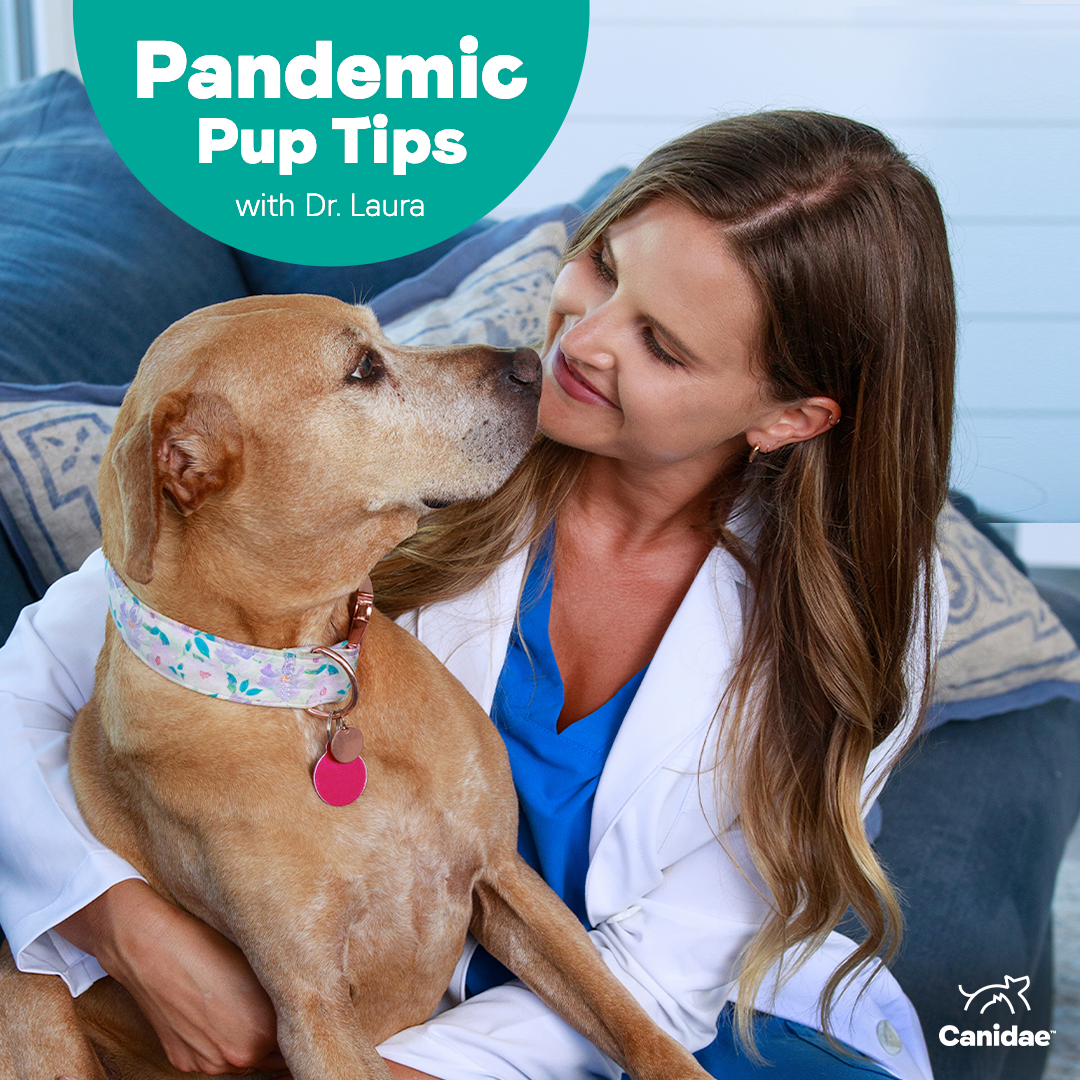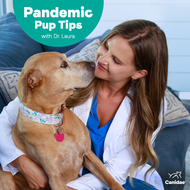Pandemic Pup Tips With Dr. Laura. Top Tips For Keeping Your Dog Safe, Happy and Healthy as You Return to the Office

5 tips for keeping a dog safe, happy and healthy as people return to the office and leave their “pandemic pups”
Step 1: Be aware of signs of separation anxiety. It is real, especially for our pets who have been used to us being home all day.
-
Separation anxiety can be precipitated by:
- moving to a new home, loss of another pet, or prolonged separation from owner (like post-pandemic when owners return to work)
- A lot of people misinterpret boredom with anxiety (i.e. becoming destructive)
- Anxiety will occur if the pet is hyper-attached and behavior only ever occurs when pet is alone
- Anxiety is usually oriented against barriers such as doors
- Episode usually will begin within 30 min of the owner leaving
-
Signs:
- Defecates or urinates when you're gone, becomes destructive, vocalizes loudly (i.e. barking or howling), may pant a lot, over groom, pace, drool, or try to escape
-
Dogs who are more prone to it:
- Dogs owned by single owners are 2.5x more likely than dogs living with more than one
- Dogs in households with multiple dogs actually develop separation anxiety just as often as dogs in single dog households
- Senior pets are more likely as they develop cognitive changes associated with aging
- Breeds predisposed: German shepherds, aussies, labs, vizsla, border collie, cocker spaniel, bichons, cavalier king charles, greyhounds, toy poodles, havanese, basset hounds
-
Having separation anxiety:
- Puts them at risk of long-term stress or serious injury while you’re away
- Ensure your pet has proper ID (tag, collar, microchip) if they do happen to escape
Step 2: Discourage Hyper-attachment before returning back to work if possible:
- This is the hardest part because we want to give our pets all of our love and attention but we have to teach them to be self-sufficient.
- Try to leave for small periods of time before all of a sudden one day going back to work for the whole day. Start with 10-15 minutes, then return, slowly add time to this every few days until your dog can tolerate a few hours at a time. If they begin to freak out when you add time, decrease it back for a while then try to increase it again.
- Resist temptation of petting dog when approached for play or contact
- Be aloof when coming home and when greeting, the human should be the initiator of contact with the dog not the other way around
- Do not allow your dog to settle down in close proximity to you, reward the dog for laying across the room or out of your bed
- Try to divide the care of the pet with someone else in the household
- Encourage independent playing by using interactive toys like kong toys containing food reward
Step 3: Relaxation during separation & keeping them happy while you are gone :getting them relaxed when they are alone
- Try to still have time during the day when you are separate from them (like in another room)
- Try to not change up your routine too quickly, try to avoid the “triggers” of anxiety like I mentioned
-
Exercise beforehand:
-
How much exercise does a dog need?
- General rule: 30-60 minutes per day, varies a lot with breed, more athletic breeds obviously need more
- Exercise before leaving would be best
-
How much exercise does a dog need?
-
Create positive enrichment: special treat, or toy or both given only when pet is left alone
- Hard rubber toys such as Nylabone® and Kong®-type products are my favorites. They are hardy enough not to break apart easily but not too hard as to break their teeth
-
"feeder" toys are rubber toys that can be filled with treats and keep your dog busy.
- These types of toys are very mentally stimulating and can keep a dog busy for an extended period of time.
- I also like to use them for anxious dogs, it can also help giving your dogs these when you leave the home to stimulate them physically and mentally while home alone
- It can be helpful to rotate your dogs toys on a weekly basis to keep them interested
- You do not want to have toys that your dog may accidentally swallow or ingest.
- You also do not want to have too hard of toys like antlers or real bones which can cause your dog’s teeth to actually break.
-
Lick mats also provide positive enrichment
- Lick mats are usually rubber or plastic mats with grooves. They are about the size of a plate and are made of various textures and patterns.
- The grooves and patterns make dog food and treats get stuck so the dog has to actively lick to obtain the food instead of eating whole and chewing
- You can use adaptil (appeasement pheromone), which is a plug in diffuser. There is also a collar version
-
Medications are an option when it’s bad
- 2 types of dogs FDA-approved for anxiety, often require giving 4-6 wks before seeing affect (ex: fluoxetine)
- Zylkene is a once a day supplement that works for some
- There are situational anxiety medication options as well, that you can use here and there
- Leave TV or radio on, there has been studies that light classical music is best for relaxing
-
Crate or free roam:
- Depends how long you are gone for, needs to be a limit on number of hours in crate
-
Does crate add anxiety or take it away?
- Depends on the dog
- Consider a dog walker
-
Consider doggy day care a few times a week
- Visit beforehand
- Talk to staff
- See if your views align
Step 4: Desensitize to separation
- Dogs learn the cues that indicate you are leaving
- Helpful to uncouple these, for instance, at random times, do the things you do before leaving but do not actually leave (i.e. grab keys, put on shoes) until they become meaningless
- Do not punish your pet, dog will not understand to associate the two
Last tip: If you plan on taking your dog to the office with you, plan ahead!
- Transportation: something they’re familiar with
- Toys, treats, puzzle games, lick mats so they have distraction and don’t get bored
- Lots of water and potty breaks
- Consider training beforehand if your dog has any behavioral issues
- Update vaccines, get on flea/tick and heartworm preventative
- Respect coworkers, understand some might not like dogs so keeping them tethered with a leash or in a crate may be best
